Whether you want to implement or improve your sales outreach plan, it’s critical to remain mindful of prospecting key principles. When doing cold outreach, your best tool for success is creating high-performing sales sequences.
What are Sequences?
A sales sequence, or cadence, is a series of sales touchpoints delivered over predefined time intervals. For example, on day one, you might send an email to your prospect, then wait two days, and if they don’t respond, send a second email.
Then if they don’t respond, you are going to send a third email, or you might send them a LinkedIn message, or you might make a phone call. That’s the standard sales process. We have defined it in a way where we can start to create a strategy around it. The overall objective of a sequence is to get somebody to take action to move from one step in your sales process or one step in your pipeline to the next step.
In this article, we discuss the three pillars of cold outreach, what sequences to create, and who they target.
Here are the three pillars of cold outreach with a summary of each in the graphic below:
- Automated Sequences
- Call Sequences
- Highly Customized Sequences
Pillar of Cold Outreach 1: Automated Sequences
Automated sequences are for low-value prospects that can potentially introduce you to influencers in the sales process, or these sequences can be used for marketing. Automated sequences should take up about 5% of your campaign bandwidth. You can expect 1-3 sales accepted leads, and you will need to target 200-300 prospects at a time when running these campaigns.
Automated sequences should be used when you don’t know if the contacts are involved in the decision-making process. You are not sure if they have the right job title, but you want to make sure that you drive awareness, and maybe they will make introductions up the chain. So, you are targeting people with an unclear title or targeting someone who would lead to connecting with the right person.
The great thing about automated or semi-automated sequences is that they take a minimum amount of time to set up, but have a strong average return. Reps could be a little bit more liberal with adding contacts to these sequences.
Here’s an example of an ’email only’ automated sequence.
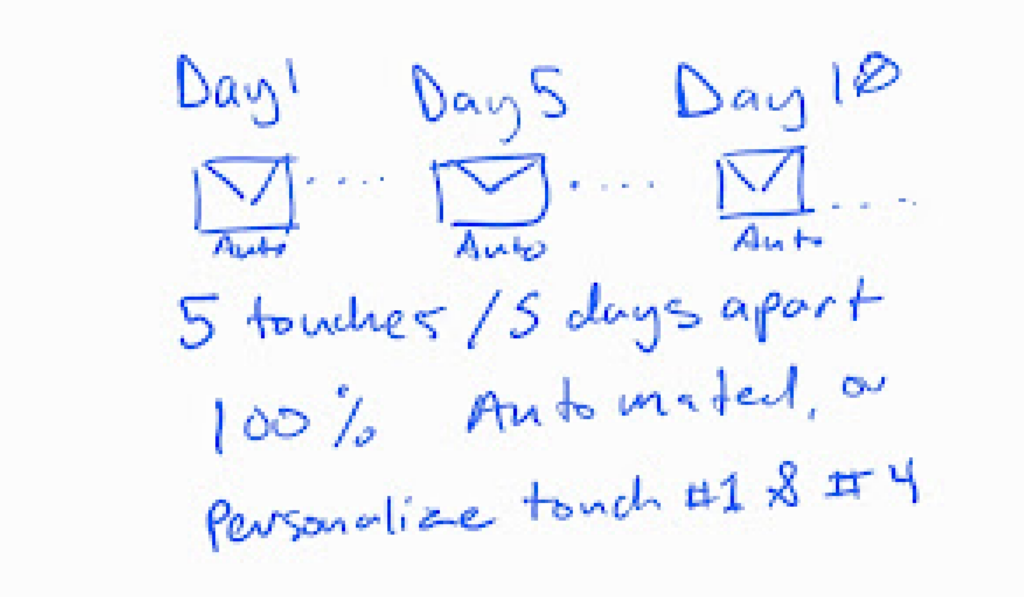
This sequence consists of five touches, and those are five days apart. 100% automated. If you want to give it a little bit more zest, you can personalize touch number one, and you can personalize touch number four.
The way to do that is to add one line of personalization into that email template that’s going out. There are a couple of ways that you could run this playbook. One, you can run it through no matter what type of engagement you are getting for your prospect.
The second way you can do it is to add calls to your sequence based on their engagement with email opens. Let’s say a prospect in your automated sequence opens your emails more than two times. Now you can tell your software to say, “Okay, now add a phone call sequence for them,” because you know that this is somebody who’s engaged, and this is somebody that you should be calling.
Pillar of Cold Outreach 2: Call Sequences
Call Sequences are the high-touch sequences. These are for prospects in your ideal client profile and that have the right job titles. They are typically influencers in the sales process. You know if you talk with them, you will likely start a sales process, and you know they can act as champions to bring in the decision-maker.
Strategy for call sequences –
- Prospect to target: Potential prospect who can become an immediate opportunity.
- Spend more time on call sequences.
- Representatives must place the correct prospects in call sequences.
- Do not place somebody in a call sequence until you are certain it is a qualifying opportunity!
You can expect a 35% open rate and a whopping 27% reply rate with call sequences. In other words, for every hundred prospects that you will enroll into a call sequence, you will get 25% of them to respond.
Here’s a 20-days outreach plan, and you will have to do 1, 2, 3, 4, 5, 6, 7, 8, 9, 10, 11, 12, 13, 14, 15, 16, different touches over those 20 days.
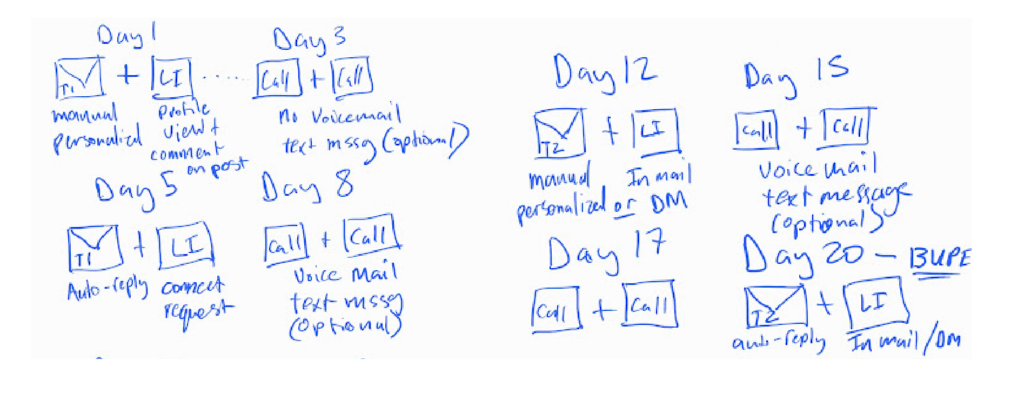
You are going to customize these sequences to your audience. Let’s say you were working with busy C-Suite prospects. You are not going to call and email them all the time. You might space this out a little more, or you might add in a little more personalization.
You will be a little bit more careful and more strategic about how you use that messaging versus when reaching out to managers who likely need repeat messaging to cut through the noise.
Pillar of Cold Outreach 3: Highly-Customized Sequences
Highly customized sequences are for prospects who are the decision-makers in the sales process. These are used to increase the reply rate of one-off custom emails and replies.
There are three types of highly-customized sequences you can use to keep the conversation going:
- Custom Follow-Up Sequence
- Pick up the Conversation Sequence
- Referral Sequence
- Custom Follow-Up Sequence
Follow-up sequences can:
- Increase reply rates by 102%
- Ensure that nothing slips through the cracks.
- Guarantee long-term follow-ups for extended outreach.
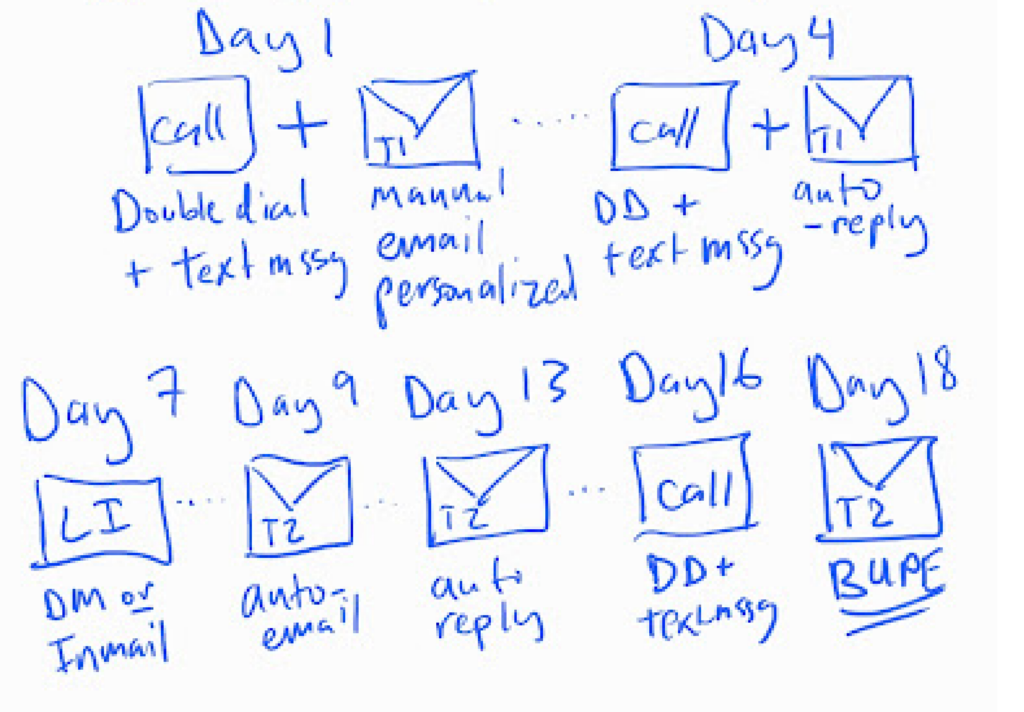
Let’s say, you get a reply from someone that says, “Yes, I’m interested in your product or service,” and you send them one email, and they go dark.
It’s like, “Oh, well we just did all this effort and all this outreach to get that person to say yes to something, to get them to have a small commitment?
Remember, anything in business is just a series of small commitments that leads up to a larger commitment. You have been able to get them to make that initial commitment. Now, you should make sure that we followed up to actually get that phone call on the books. That’s where a follow-up sequence would come into play.
- Pick up the Conversation Sequence
This is for those high-priority prospects that have had some type of positive interaction with you in the past.
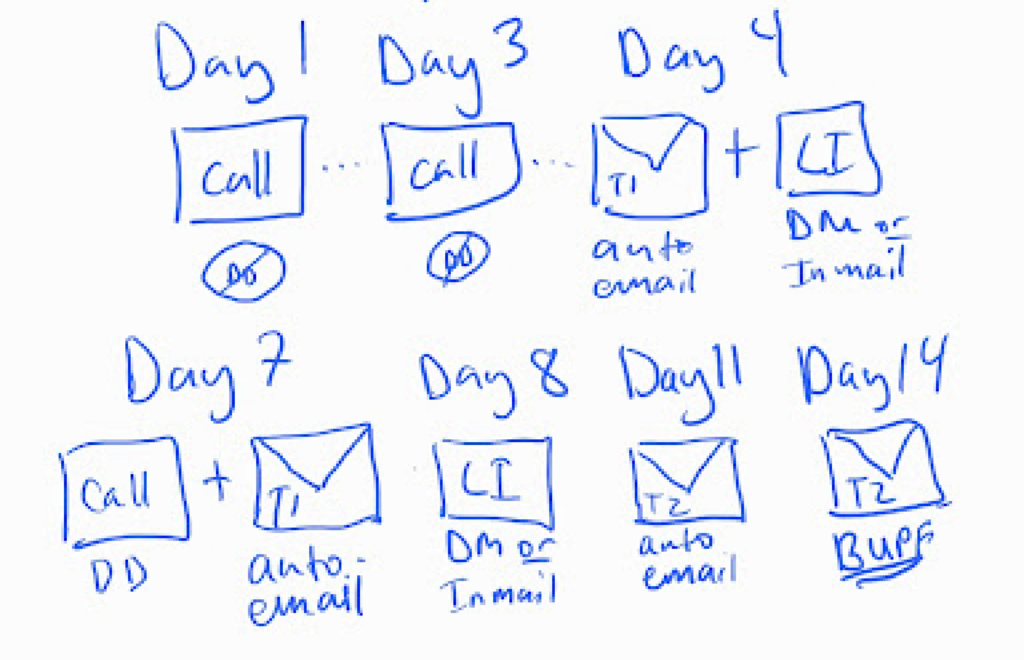
A great use case would be you had a prospect, and they made it halfway through your sales pipeline or your sales process. Then they go quiet, maybe they lost their budget or your champion for that sale quit, and you want to reach back out to that prospect. The pick-up conversation sequence is a great way to do that.
- Referral Sequences
A referral sequence is a custom sequence with a template for how to reference your previous conversation as well as relevant language for future follow-ups. Every time you connect with someone that isn’t a decision-maker ask for a referral. Referrals will lead to a high-quality meeting 25% of the time
Here’s how your referral sequence can look like:
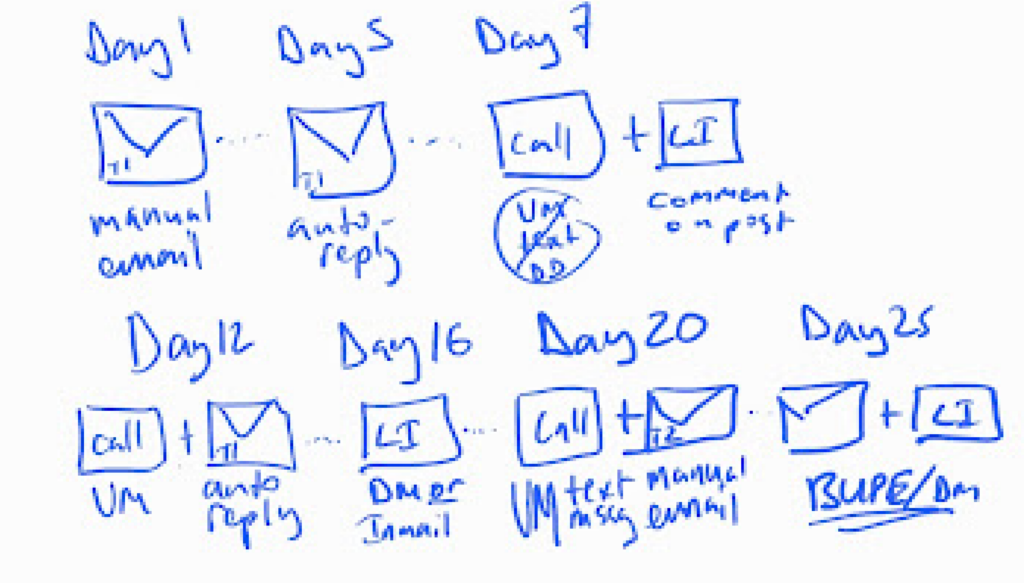
Every single time that someone tells you “I’m not the right person” whether by phone or email, simply ask, “Who should I be reaching out to?” That’s it, get the name and move on.
How often can you turn an accidental conversation with the wrong person into a referral? At least 50% of the time.
Do it Right the First Time…
When you are planning your sequences, focus on the spacing between these different touches. The lower down the chain, the more you can put them together or have less space in between touchpoints. You want to move fast to find opportunities. The higher up, the more you need to space it out. You already know it’s a good fit, so you can take the time to customize and wait for responses.
Someone who is a marketing intern is going to be checking their email every day. They are going to have all their inbox cleared versus a CEO that’s going to maybe not fully check their email for five days.
Again, if you send them an email every two days, by the time they go to check it, they have got four emails from you, and that’s a dead giveaway that it’s automated and that you don’t respect their time.
Now you have a sequence for picking up the conversation. Then, a sequence for making sure you’re referred to the right person. And you have a sequence where you will have a highly-customized conversation with your hot prospects to bring the deal home.






